Most people love the scrumptious scents of Yankee and Bath & Body Works candles and wax melts. Back in the day, I could burn through several Warm Vanilla Sugar candles every month! Of course, that was before I had any idea what was actually in those… and what kind of toxins I was putting into my air as I burned them.
There are three main issues with conventional candles:
- The wax is often made from petroleum byproducts, which does not make for a healthy to burn.
- Usually, the chemicals that make up the synthetic fragrance include things like phthalates, carcinogens, VOCs, allergens, and more.
- If not sourced properly, the candle wicks can contain a lead core.
In this article, we’re going to give you the in-depth info about each of those problems so that you can learn about what’s actually in your beloved scented candles, and then we’ll talk about what to look for in organic, non-toxic candles instead! (And don’t worry, you’ve got lots of options when it comes to safer candles!)
Table of Contents
- Paraffin Wax: When Burning Candles is Like Burning Fossil Fuels in Your Home
- Why Are Synthetically Scented Candles Bad?
- What’s Up With Lead Wicks?!
- Sooo, What are the Healthiest Candles to Burn?
- “Natural” vs. “Organic” vs. “Non-Toxic” Candles: What’s the Difference?!
- Which Wax is Best?
- Good: Soy Wax Candles
- Better: Coconut Wax Candles
- Best: Beeswax Candles (They’re the Bee’s Knees!)
- Tallow and Other Types of Unconventional Wax Candles
- What About “Vegetable Wax” and “Palm Wax” Candles?
- Be Careful of Wax “Blends”
- What About Non-Toxic Wax Melts?
- Are All Natural/Non-Toxic Candles Also Vegan?
- Looking for More Non-Toxic Candle Buying Guides?
Paraffin Wax: When Burning Candles is Like Burning Fossil Fuels in Your Home
Most conventional candles are made primarily with paraffin wax. Paraffin wax is derived from petroleum, coal, or oil shale. The main reason it’s used is that—well, it’s cheap, of course!
In general, petroleum products are not great for human or environmental health for various reasons. When talking specifically about paraffin wax candles, our main concern is what’s called BTEX, which is a group of chemicals that includes benzene, toluene, ethylbenzene, and xylene.
- Benzene and ethylbenzene are carcinogens.
- Toluene can cause headaches, confusion, fatigue, and eye, nose, and throat irritation, as well as damage, reproductive harm, and developmental toxicity.
- Xylene can lead to a wide variety of concerns, from headaches and dizziness to pulmonary edema, long-term negative effects to the nervous system, and more.
To make matters worse, when you burn a paraffin wax candle in your home, those chemicals don’t disperse into the atmosphere like they would if you were outside—instead, they just linger. (That’s one reason why the EPA says indoor air pollution can be two to five times worse than outdoor air pollution.)
Why Are Synthetically Scented Candles Bad?
So now that we’ve covered the wax, let’s talk about the fragrance. If you’ve spent much time at all researching non-toxic personal care products, cosmetics, or cleaning products, you may have already experienced the frustration that can come with this one simple word.
In short: there’s something called the “fragrance loophole” which allows companies to legally withhold ingredient information from consumers because their scent formulas are considered “trade secrets.”
There are now nearly 4,000(!) different chemicals that brands can include in their scented candles while hiding them under the label of “fragrance” or “parfum.” Some of these are completely harmless, while others (like phthalates, for example) are really dangerous. The problem is that consumers simply have no way of knowing whether or not the “fragrance” used in their candles is safe or not.
If you want to learn more about this fragrance loophole and the differences between natural and synthetic fragrances, we wrote about it extensively right here.
Home
What is the “Fragrance Loophole”? (How Toxic Chemicals HIDE In Products)
Are synthetic fragrances bad? What’s the difference between synthetic and natural fragrances? Learn all about the “fragrance loophole” and more.
What’s Up With Lead Wicks?!
In the past, a lot of candle manufacturers used cotton wicks with lead cores in order to make the wick stand up straighter. Lead, as we know, can be extremely dangerous, especially for babies and little kids.
The good news is that the U.S. Consumer Product Safety Commission (CPSC) banned the manufacture and sale of lead-cored wicks and candles with lead-cored wicks in 2003, so this is not nearly as big of a problem as it used to be.
However, it’s possible that candles coming from overseas may still contain lead, so it’s important to make sure to check the label and buy from brands that are being careful about their wick sourcing.
Sooo, What are the Healthiest Candles to Burn?
If conventional candles are a no-go, then what’s the alternative? Well, the good news is that there are plenty of safe, non-toxic candles on the market today. Here’s what to look for in a safe, healthy candle:
1) Petroleum-Free Wax
The first thing to look for is wax that comes from natural, non-toxic, and sustainable sources. We’re going to go into the different types of safe, natural wax to look for (and their pros and cons) in just a minute.
2) Transparent, Natural Fragrances
Look for brands that use natural botanicals and essential oils instead of synthetic fragrances.
Again, not ALL of the chemicals allowed under the fragrance loophole are bad, but you should shop from brands that are willing to be transparent and disclose their full ingredients to customers. If synthetic fragrances are used, they should definitely be free from things like phthalates and VOCs.
Additionally, candle makers that use essential oils should make sure they are sourced responsibly and formulated properly. Be aware that some people are allergic to certain plant-based fragrances, so even high-quality essential oils can be irritating for some individuals.
It should be noted, though, that many times, non-toxic and naturally-scented candles don’t smell as strong as conventional ones Those who get very overwhelmed both those strong, chemical-y smells prefer this, while others like to fill up an entire space with strong fragrance. Either way, it’s just something to be aware of since you may have to alter your expectations when switching to non-toxic candles.
3) Leaf-Free Cotton, Wood, or Hemp Wicks
Look for candle makers that use natural cotton, wood, or hemp wicks that do NOT have a lead core.

“Natural” vs. “Organic” vs. “Non-Toxic” Candles: What’s the Difference?!
What do these words even mean when it comes to candles? First, it’s important to remember that they’re often used as marketing jargon, and just because something is labeled as “natural,” “organic,” or “non-toxic” doesn’t mean it really is. (Unfortunately, we come across this all the time in our research…. It’s called greenwashing!)
But in general, you can think of these words like this:
- “Natural” candles are made of wax materials that can be found in nature and processed with minimal chemical intervention. This includes soy, coconut, beeswax, tallow, and natural essential oils.
- “Organic” candles are made using natural materials that have been grown and processed without the use of synthetic herbicides, pesticides, or insecticides. Usually (though not always), when something is labeled as organic, you should look for a third-party certification such as USDA. You should be aware, though, that there’s technically no such thing as organic soy wax (more on that in a minute).
- “Non-Toxic” usually refers to candles that are made without the use of things like phthalates, VOCs, and petroleum products. Again, from a marketing standpoint, “non-toxic” can sometimes mean different things to different people, so don’t ever be afraid to check the label and ask more questions if you want more information about the specific ingredients used in a candle.
Be aware that sometimes candle makers will use some natural, organic, and/or non-toxic ingredients, while others will use 100% natural, organic, and/or non-toxic ingredients.
Which Wax is Best?
Now let’s go through the different types of paraffin-free wax so you know what to look for! (And don’t worry, we’ll link to our favorite brands so you know which ones have already been vetted for you!)
Good: Soy Wax Candles
Proponents for 100% soy wax candles will say they are the better choice as they burn cleaner, so there is less soot, and are from a renewable source (unlike paraffin).
Which is… mostly true.
But there are some downsides to soy candles. Manufacturers of soy candles can market them as “pure soy” even if they add palm wax or beeswax because this isn’t regulated. You will often find paraffin wax added to a “soy candle” because it keeps the cost down. So be sure to check the ingredients!
One more thing about 100% pure Organic Soy Candles: there’s no such thing. Even if the soybean was organic to begin with, all soy wax is processed with hexane, making it unable to be certified organic.
The oil/wax is then bleached with chlorine, deodorized with boric acid, then put through a hydrogenation process to make it into a solid. Hydrogenation usually occurs in the presence of a catalyst such as nickel, palladium, or platinum.
To top it off, the soybean industry is a largely unsustainable one; it contributes to deforestation, is often grown with a lot of herbicides and pesticides, and decreases biodiversity (most soybeans in the U.S. are genetically-modified and come from mono-cropped farms).
So, soy is not the best option, but it’s definitely better than paraffin and “vegetable” wax candles! Soy candles are also easy to find, making them a more accessible alternative.
We’ve got a whole guide for all of our favorite non-toxic soy candle brands, which you can check out right here!
Home
The 7 Best Brands for Non-Toxic, Natural Soy Candles
Soy candles have their downsides, but they’re a much better alternative to conventional paraffin wax candles, and in this article, you’ll learn why. Then we’ll give you the best brands for non-toxic soy candles (and we considered a LOT of brands!
Better: Coconut Wax Candles
Coconut wax is considered very safe, burns cleaner and longer, and will throw scent well (meaning it can fill a room). I’m always all about coconut, so I’m quite happy to recommend it, although these candles may be a bit more expensive. As always, just keep an eye on the other ingredients as the essential oils should be listed, and stay away if there is “fragrance/parfum” listed.
Soy and coconut wax candles are both good options for vegans. The only problem with coconut wax candles is that they are commonly mixed with other types of wax to provide more stability, so it’s difficult to find 100% coconut wax candles. But, we do have a guide to our favorite brands using coconut wax candles as well! Just click here.
Home
Pros & Cons of Coconut Wax Candles (+ The Best Non-Toxic Brands)
In this article, you’ll learn about the pros and cons of coconut wax candles along with the best non-toxic brands.
Best: Beeswax Candles (They’re the Bee’s Knees!)
When beeswax candles burn, they naturally clean the air by producing negative ions—like an ionic air purifier but without electricity. Negative ions will attach to positive ions hanging around in the air (like dust, odor, mold, and pollen). This process literally cleans the air by neutralizing indoor pollutants. Burning a beeswax candle can actually help reduce symptoms for allergy and asthma sufferers!
Beeswax burns cleaner (just keep that wick trimmed!), longer, and brighter. Beeswax candles do not contain any of the toxic particle matter or VOCs found in paraffin candles. Plus, they’re hypoallergenic!
Even though beeswax candles are typically more expensive, they will burn ~55% longer than an equal-sized paraffin candle. Not only that, but beeswax candles don’t necessarily need to contain added scents since they have a naturally sweet aroma.
Plus, by purchasing pure beeswax candles and supporting local beekeepers, you’re helping to protect bee populations, which are currently in danger!
Here are some of our favorite non-toxic beeswax candle brands.
Home
The Best Non-Toxic Beeswax Candles (Scented & Unscented)
When making the switch away from paraffin wax, beeswax candles are one of the BEST natural and non-toxic alternatives you’ll find. Here’s why (+ our recommended brands).
Tallow and Other Types of Unconventional Wax Candles
In addition to the ones above, you may come across some other (less commonly used) types of wax.
Tallow, for example, was actually one of the first things humans used for candles (along with beeswax); they used to be MUCH more popular than they are now!
Not only that but tallow (which is fat rendered from beef and also called beef lard) was also used to make soap and was a staple in the kitchen. Of course, this was before all of the cheap, highly-processed vegetable oils came on the scene.
Tallow can still be a great option for candles, especially as a way for regenerative and grass-fed beef farmers to utilize the whole animal in their low/zero-waste processes.
You can check out our picks for non-toxic tallow candles right here.
Some other examples of unconventional natural wax candles include sumac (which comes from what’s referred to as the ‘Japanese wax tree’), rice wax, and flower wax!
Home
Where to Shop for the Best Tallow Candles
Although not nearly as popular as they once were, tallow candles can be a great non-toxic alternative to paraffin wax. Here’s why (and where to get them).
What About “Vegetable Wax” and “Palm Wax” Candles?
You may see some manufacturers use “vegetable wax blends” and/or “palm wax” for their candles. This means their wax can be made out of a number of different plants, including soy, coconut, palm, rapeseed, sunflower, and more (no, it doesn’t actually have to be a vegetable).
On one hand, these ingredients might be better than paraffin, but on the other hand, a lot of these plant-based oils—especially palm—are sourced in a very unsustainable way. For this reason, we prefer to stick with candle companies that are more transparent about their wax blends and we actually know what’s in them.
Be Careful of Wax “Blends”
When shopping for candles, you should be careful about wax blends. There are several different reasons why candle makers will use a blend, and many wax blends are very safe (like coconut and beeswax, for example). However, some brands will use “blends” to sneak in harmful ingredients. Bath and Body Works, for example, includes paraffin in their “soy wax blend.” Sneaky, sneaky!
What About Non-Toxic Wax Melts?
If you’ve got pets and/or little ones around, you might prefer to skip the open flame and use wax melts instead. Wax melts are harder to find, but we’ve found several great brands that are using safe and natural ingredients. Just click here!
Home
The Best Natural & Non-Toxic Wax Melts
Although there are many different brands that sell non-toxic candles, safe wax melts are harder to find! But don’t worry: we’ve done the research for you and are serving you the best natural and safe wax melts (that also smell amazing).
Are All Natural/Non-Toxic Candles Also Vegan?
Not necessarily! Some non-toxic candles (like soy and coconut) are great options for vegans, while others (like beeswax and tallow) are not. If buying candles that are completely free of any animal products is important to you, we recommend sticking with the plant-based candles, and just make sure you double-check the label!
Looking for More Non-Toxic Candle Buying Guides?
We’ve got a lot of them! Check out these related articles:
- These are the best non-toxic soy candles.
- Here are the best brands for non-toxic coconut wax candles.
- If you’re looking for natural beeswax candles, click here.
- And for tallow candles, check this article out.
- Are Bath & Body Works candles bad for you?
- What about Yankee Candles?
- The best non-toxic holiday & winter candles
- Our picks for non-toxic fall candles (hello, pumpkin!)
Conclusion: What to Look for in Non-Toxic Candles
To sum up the “extra” bits (since we learned a lot today!):
- Pass on colored or dyed candles. (Many of the pigments used in candles can be toxic to the environment and you!)
- Burn candles with 100% cotton wicks.
- Purchase candles made with 100% pure essential oils. (As opposed to “fragrance/parfum”)
- Know your essential oils! (Some are bad for your pet or you if you are sensitive or allergic)
- Choose eco-friendly and sustainable coconut and/or beeswax candles.
- Also, try alternative methods to candles: simmer pots, essential oil sprays, or non-toxic wall plug-ins.

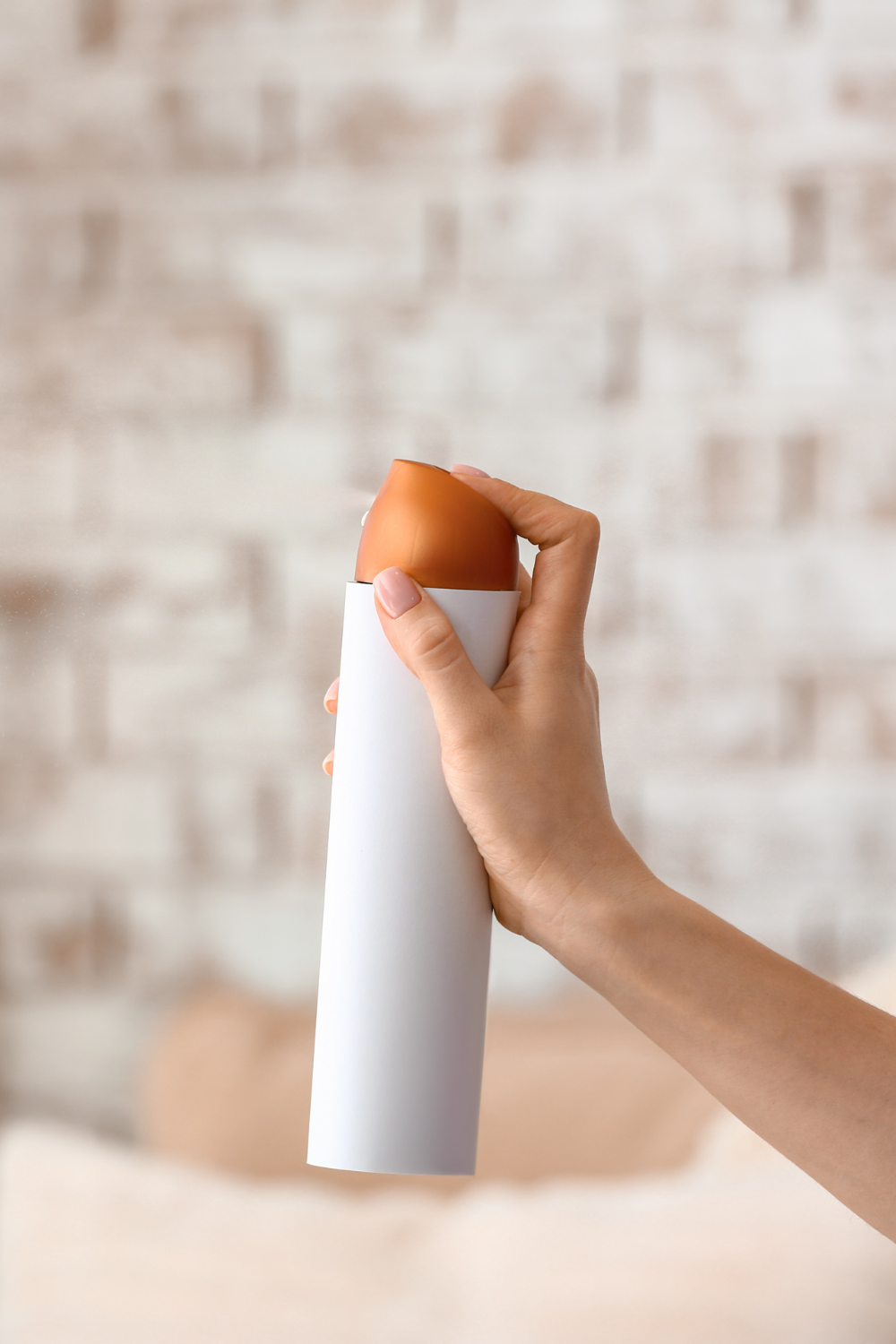
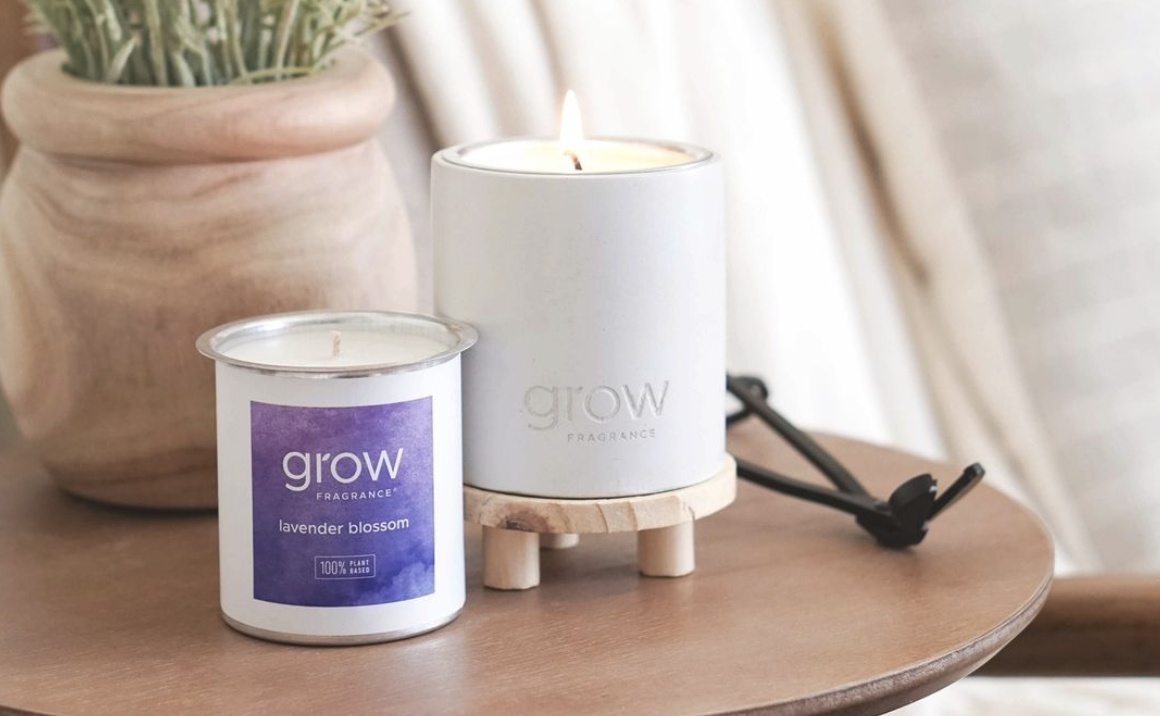
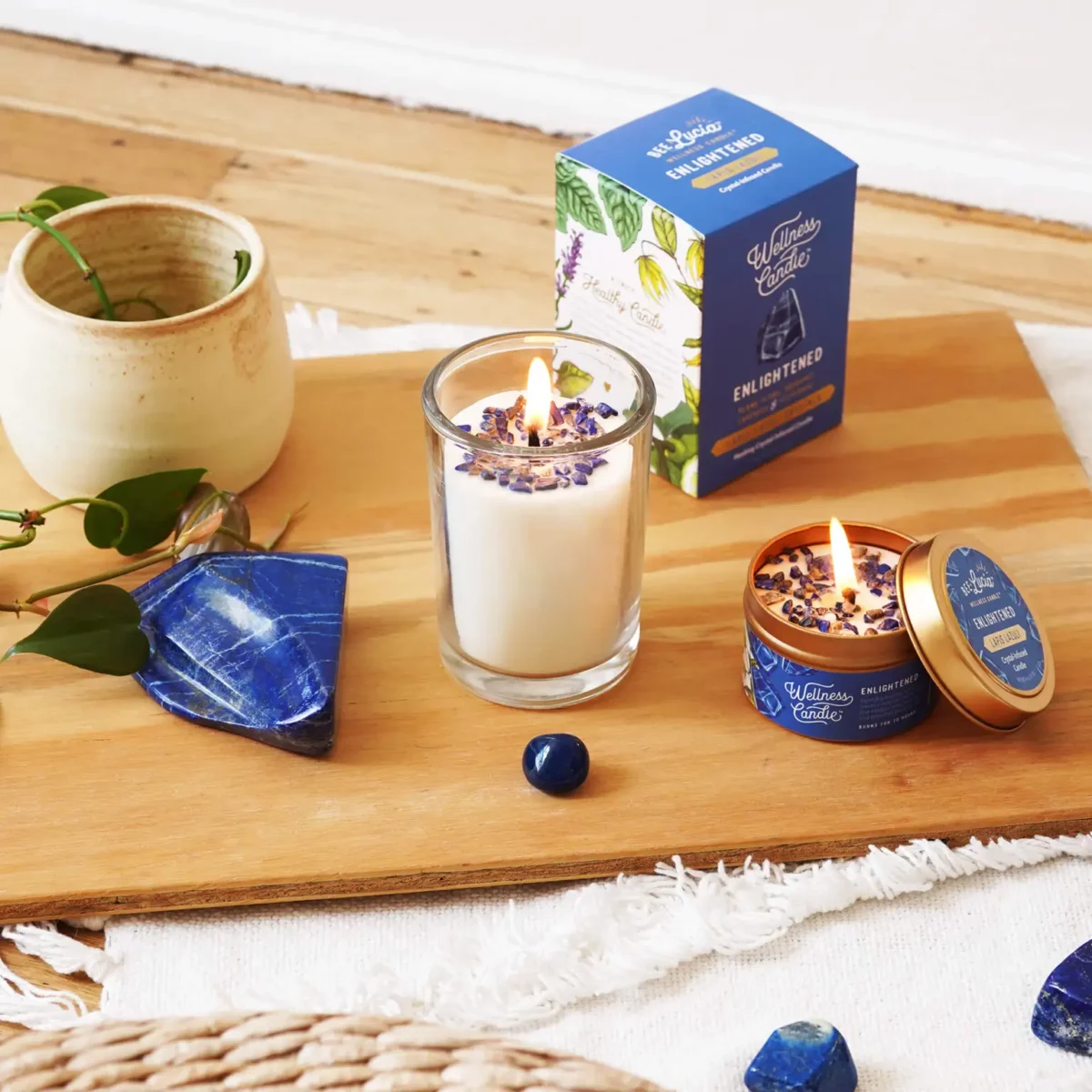
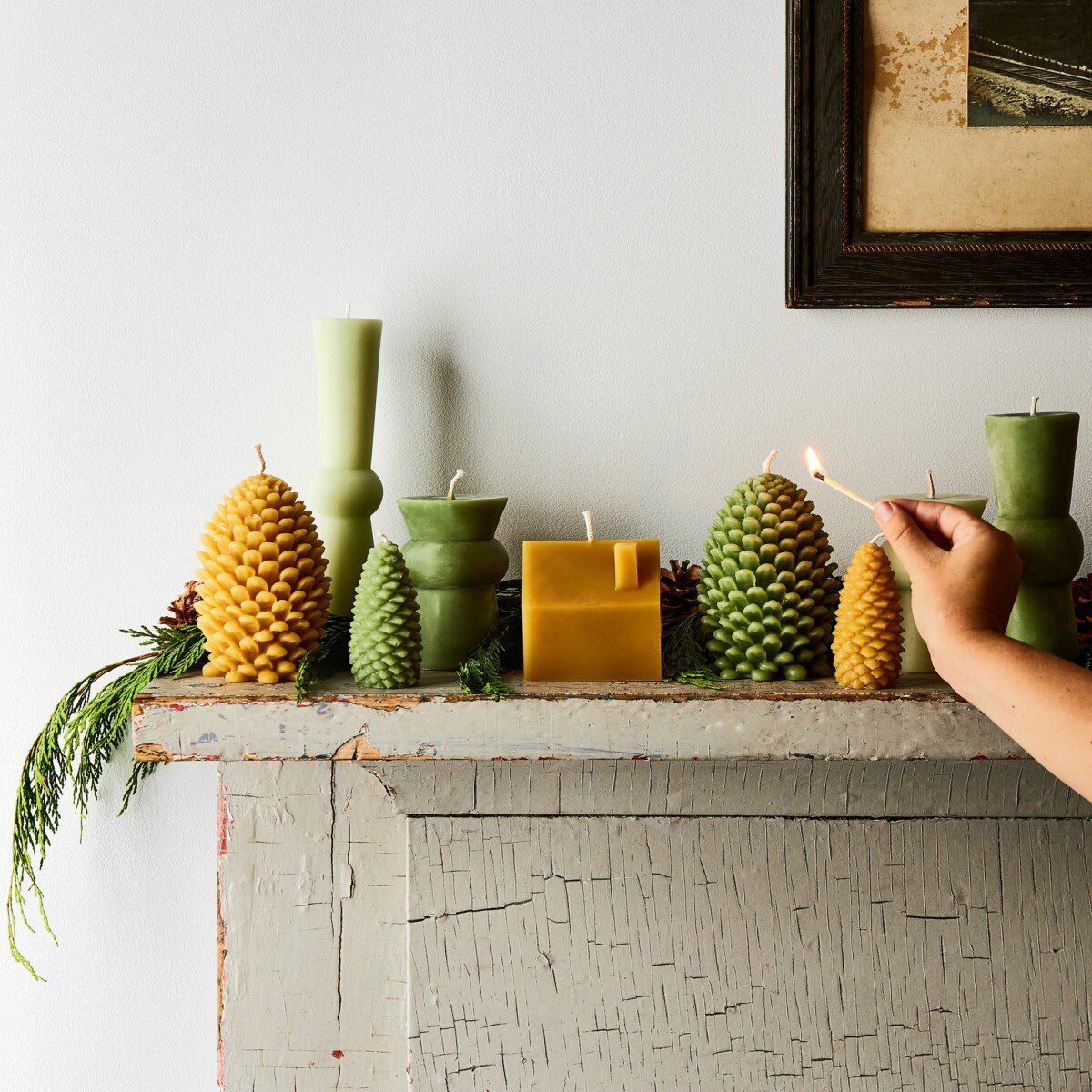

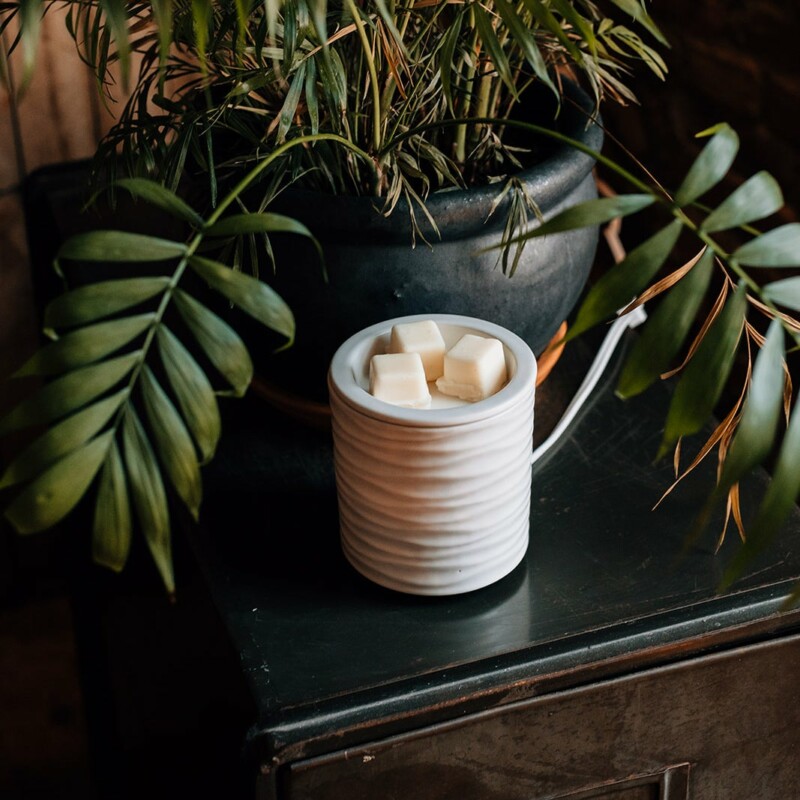





I am an independent distributor for a candle company who uses 100% palm wax with 100% cotton wicks and the highest quality fragrances. They smell great and burn clean, no soot. Are these healthy candles to burn? I am aware about the deforestation issue. Are these good candles?
Hi Trish! Unfortunately, I can’t really say without knowing what’s in the fragrances…